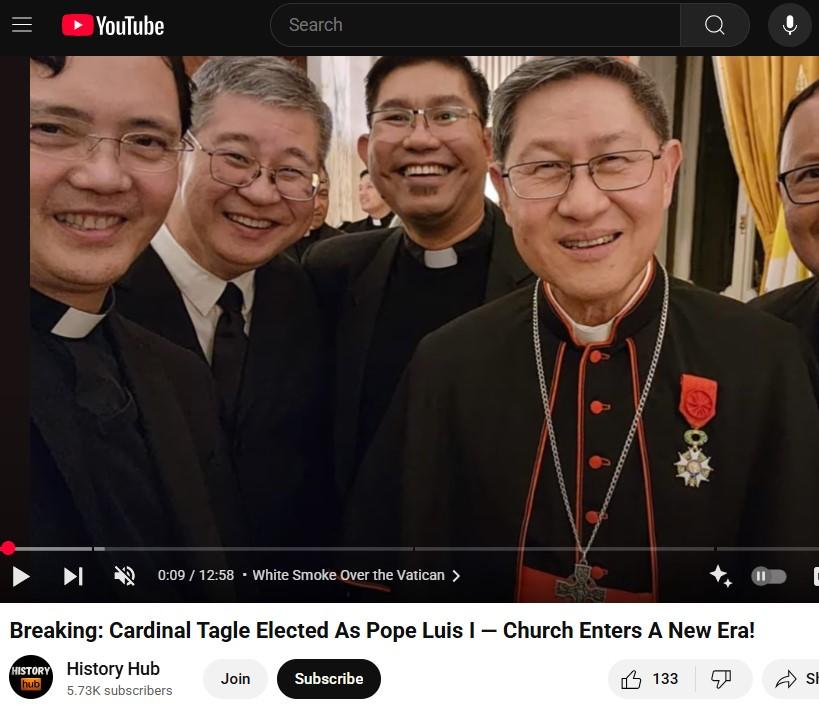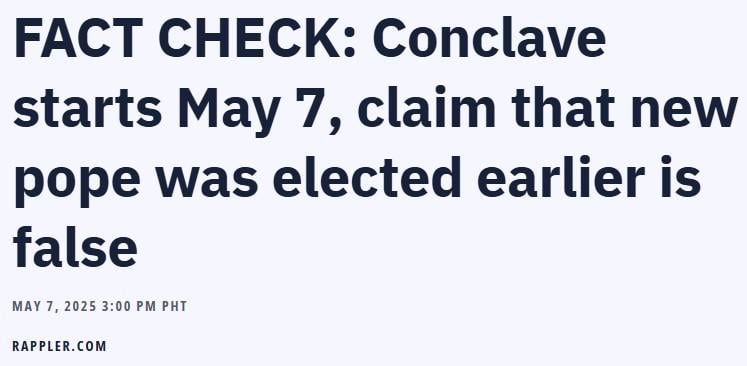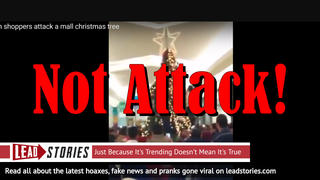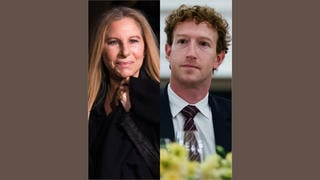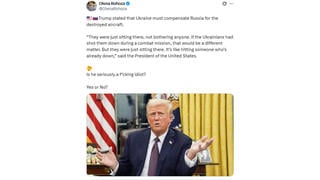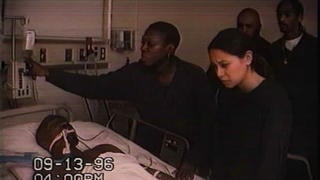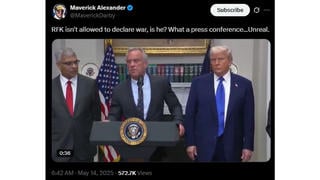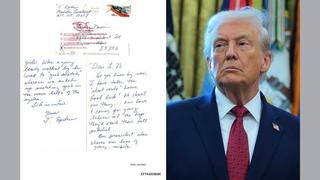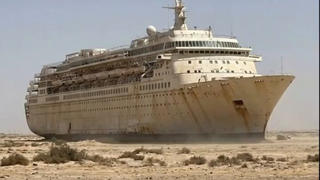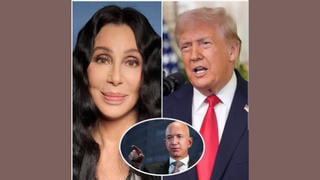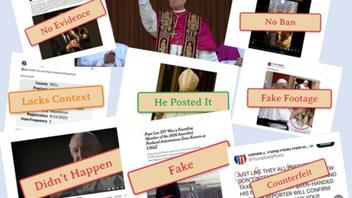
ROME - That puff of white from atop the Sistine Chapel has long been a starting gun for conspiracists. With a new character in the story, they proclaim they alone tell the truth about dark forces playing pontifical puppeteers.
These stories humans tell to make simple sense of complex events move ever faster, now that there's money to be made by anyone with a social media account.
I was a teenager in Rome when John Paul I died in 2005, just 33 days after the Conclave that elected him. It wasn't long before I heard adult whispers that the pope had been murdered by Freemasons or by officials of the Vatican Bank, who supposedly needed Albino Luciani silenced forever.
The only fact-checkers we had at the time were historians working at the speed of peer-reviewed academic publishing and journalists working a little less slowly, in newsrooms steeped in a culture of verification built to prevent the pollution of the public square.
Conspiracists muttered their stories in small groups, sometimes gaining enough fame to put their theories between the covers of a book.
Conspiracy moves faster, always.
Standing in St. Peter's Square on Thursday with my teenage sons, I knew a new pope meant their smartphones would rapidly carry to them stories that had been through no process of verification and review.
Because social media monetizes attention, there would be no delays: As soon as someone could think of it, thousands or even millions would read it.
Conspiracists profit by striking first and once a story gathers attention, social media algorithms guarantee even more attention.
Conspiracy theorists and fabulists didn't wait for the conclave.
On the day of Francis' burial, April 26, Catholics in the Philippines were targeted by a fake documentary declaring that their countryman, Cardinal Luis Antonio Tagle, had already been selected and would serve as Pope Luis I:
(Source: YouTube.com screenshot by Lead Stories.)
That country's award-winning fact-checker, Rappler, quickly published a debunk:
(Source: Rappler.com screenshot by Lead Stories.)
Similarly, videos in Spanish appeared prematurely online, declaring Vatican Secretary of State Pietro Parolin had been elected before the final votes had been counted.
There's a difference between the automated platform-amplified stories and the idle chatter I tuned into in St. Peter's Square. The historic venue was crowded before 5pm CEST, an hour ahead of the expected "smoke."
There was a sense of excitement when the morning smoke, black for no winner, drifted up just two hours after the conclave had withdrawn behind closed doors. There were theories - that the early smoke meant a consensus was forming.
When, around 6:15 p.m., the white smoke started billowing from the Sistine Chapel chimney, where the 133 cardinals electors were gathered, loud cheers and clapping rose from the square. People around me had been ready to camp in St. Peter's Square for at least another day.
There was handicapping: Jerusalem Patriarch Pizzaballa, Parolin, and young Roman Cardinal Matteo Zuppi.
Then the central loggia of the Basilica opened for the announcement.
The silence was defining. More than an hour had passed since the white smoke.
"Habemus Papam," said the cardinal protodiacono, Dominique Mamberti, pronouncing the Latin name of the new pope: "Robertus Franciscus" and then his surname: "Prevost."
At the pronouncement of his papal name, Leon XIV, the crowd erupted with applause, but then went looking for information, which may be how conspiracy finds its audience: people want to know things.
Not everyone gathered at the Holy See understood exactly that name, and even fewer knew about the American cardinal who had just been chosen to sit on the Throne of Peter.
A lot of Googling started then, trying to figure out his age, birthplace, and - most of all - his position on some of the crucial issues the church will face: the unity of the global church, ecumenism, migrations, reproductive and gay rights, and how to be effective in the current war crisis.
When Prevost came out, smiling and blessing the crowd, his speech was not a simple greeting or blessing. He invoked "a disarmed peace and a disarming, humble and persevering peace," urging: "We must seek together how to be a missionary Church, a Church that builds bridges, dialogue, always open to receive like this square with open arms."
Prevost, Google searchers found, was a missionary in South America and grew up in Peru (he's a naturalized Peruvian). Part of his speech was delivered in Spanish as a greeting to his diocese of Chiclayo, in Peru. This, too, sparked some surprised, if not angry, reaction in the United States: Why didn't he speak any English if he is an American? Turns out, Latin is the official language of the Holy See, Italian is the working official language, and the Spanish part of the speech was a specific tribute to Peru. In this country, he arrived as a missionary as a young man. He spent ten years there as a bishop before being called by Pope Francis back to Rome as Prefect of the Dicastery for Bishops and President of the Pontifical Commission for Latin America, promoting him to the rank of Archbishop. He became a cardinal only last year.
Speculation starts with the name the pope chooses: looking at his predecessors or saints (as in the case of Francis) bearing the same name, one can at least foresee a programmatic stand.
The last pope Leon in history, Leon XIII, sat on the Throne of Peter at the end of the 19th century and gained fame for his commitment to workers' rights and attention to industrializing society's problems. He wrote the "Rerum Novarum", considered the first explicitly social encyclical in the history of the Catholic Church, and formulated the foundations of the modern social doctrine of the Church.
Immediately after Prevost's selection, misleading social media posts declared him a Republican. Commenters declared him a socialist.
I hope the world can start to learn the kind of skepticism for fast-spreading conspiracy theories Romans once reserved for legacy media: "Non mi fido di quello che dicono" ... "I don't trust what they say."
Until that takes hold, our team here in Rome is chasing the stories that arose with the smokey plume that announced the arrival of Leon XIV and checking theories that fill in the unknown and the unknowable.
Editors Note: Lead Stories is the first fact checking newsroom accredited by the press office of the Holy See. Based in Rome, Raffaella Menichini is Deputy International Teams Manager & Editor at Lead Stories. She has over 30 years of experience finding facts to counter theories, from UK Prime Minister Margaret Thatcher's years, the Troubles in Northern Ireland, and the war in the Balkans as well as elections at home and abroad.

